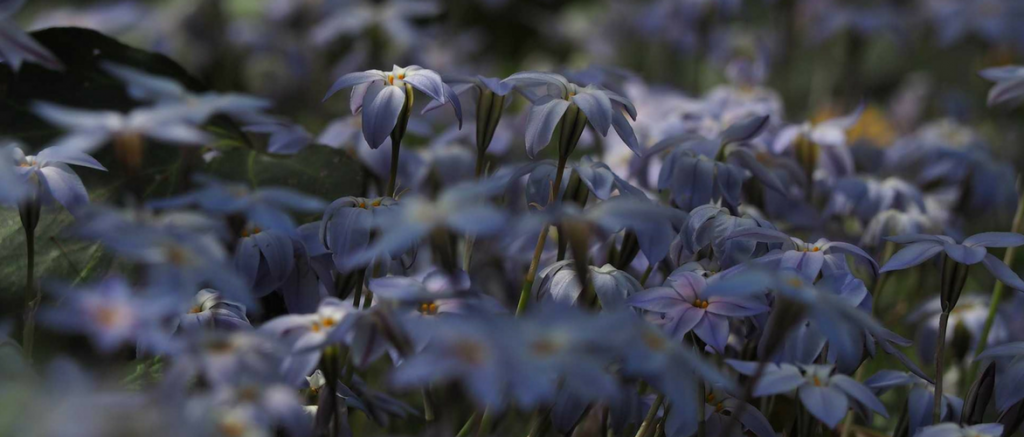
Ipheion: Planting, Growing and Companion Planting
Contents
Ipheions in a nutshell
- Easy to grow and hardy, these small bulbs are very floriferous
- Their small, star-shaped and fragrant flowers are among the first to bloom each year
- They tolerate both full sun and partial shade
- Low-maintenance, they naturalise very easily
- They can be grown in flowering carpets as well as in pots
Our expert's advice
Ipheion uniflorum or Tristagma uniflora, also known as Spring Starflower, is a charming little bulbous flower that blooms early (from December in mild climates) and grows anywhere with no maintenance required. Its star-shaped, fragrant flowers in shades of blue, white to mauve are among the very first to appear each year, brightening shady garden areas in winter. From blue Ipheion uniflorum varieties like ‘Wisley Blue’ and ‘Rolf Fiedler’ to white cultivars such as ‘White Star’ and ‘Albert Castillo’, these inexpensive little spring bulbs naturalise easily, forming increasingly floriferous carpets over the years in lawns, meadows or large beds among perennials, at the base of shrubs, in rockeries, in both sunny spots and dappled woodland shade. The leaves of Ipheion, also called “Inca Lily”, resemble tender grass and are edible, adding an alliaceous fragrance to salads. Discreet yet luminous, Ipheion brings a touch of freshness to gardens as well as container plantings alongside other spring bulbs like daffodils, wood anemones, hyacinths and botanical tulips. Whether pure white, rosy mauve or cobalt blue, choose your favourite Ipheion from our collection to create beautiful spring planters or brighten your garden from late winter through spring.
Botany
Botanical data
- Latin name Ipheion uniflorum, Tristagma uniflorum, Triteleia uniflora
- Family Alliaceae/Liliaceae
- Common name Spring Starflower
- Flowering From December to May in mild climates
- Height 0.10 to 20 cm
- Exposure Sun, partial shade
- Soil type Clay, stony, chalky
- Hardiness Beyond -15°C
Ipheion uniflorum (so named because they bear a single flower), also known as Tristagma uniflora or Spring Stars, are delightful little bulbous perennials from the Alliaceae/Liliaceae family, related to garlic and onion – a kinship revealed by the alliaceous scent emitted when their leaves are crushed. These South American plants grow naturally in the grasslands and rocky outcrops of Argentina’s highlands. From these mountainous origins, Ipheions have retained a hardy and undemanding nature. They adapt well everywhere and can withstand temperatures as low as -10°C to -15°C for short periods in our regions. Despite their delicate appearance, Ipheions are robust, easy-to-grow bulbs, unfazed by heat or drought.
The genus comprises ten species, the most common being Ipheion uniflorum with pale lavender-blue flowers. Today, we distinguish several cultivars from the species type with more varied colours; vibrant like Ipheion Uniflorum ‘Charlotte Bishop’, with its mauve-pink blooms, ‘Froyle Mill’ with purple flowers, or ‘Wisley Blue’ in lilac-blue. ‘White Star’ and ‘Alberto Castillo’ stand out with their white flowers.
Ipheions have a low, spreading habit, forming beautiful flowering ground covers that can sometimes become invasive. Within two to three seasons, the initially planted central bulb produces bulbils or offsets that multiply rapidly and persist in well-drained soil. This small bulbous plant may self-seed occasionally but naturalises easily on slopes, in rockeries or borders. They can remain in the ground and reliably rebloom each spring, year after year. Dividing clumps every 5 years will help maintain the plant’s vigour.
Ipheions are prized for their very early and exceptionally long spring flowering that brightens shaded areas of your garden in winter. Blooming continues uninterrupted for 2-3 months, from February-March to May, starting as early as December in mild climates, peaking in March and April. Each bulb produces several slender, upright flowering stems, 10 to 30 cm tall. In late winter, alongside the first crocuses, small star-shaped solitary flowers or pairs appear, 1 to 4 cm in diameter. The dark, recessed centre contrasts with yellow stamens.
Facing skyward, they consist of 6 more or less pointed tepals, whose size and colour range from white to pale blue or lilac, varying by cultivar. Some Ipheion uniflorum bear large pure white star-shaped flowers, others like ‘Wisley Blue’ display lilac-blue blooms, while ‘Rolf Fiedler’ offers small round stars of vivid cobalt blue, more rarely mauve-pink or violet-pink flowers. Some feature pronounced midrib striping, others show lovely blue gradients. All exude a sweet honey fragrance.
From late summer, the bulb produces a dense clump of grass-like, arching leaves. In autumn, Ipheions develop deciduous, grass-like foliage. In summer, leaves yellow and disappear as the plant enters dormancy. The linear, ribbon-like green or blue-green leaves, 20-30 cm long, release an alliaceous scent when crushed – hence the nickname “Inca garlic” – and are edible.
Ipheion uniflorum are vigorous bulbous plants that thrive everywhere in both sunny and semi-shaded spots. Easy to grow, they tolerate almost all soil types including slightly dry or chalky soils, provided they are well-drained and light. They relish hot, dry summers but dislike heavy, waterlogged winter soils.
They suit many situations, creating delicate, fresh displays. For striking decorative effect, plant en masse, in groups of about fifty bulbs, as flowering carpets, ground covers beneath spring-flowering deciduous trees, along pathways, in rockeries, gravel gardens, by walls or scattered through lawns.
Spring Stars also adapt beautifully to spring container gardening. Ipheion’s small bulbs tuck in anywhere among established plants and thrive alongside many other early, easy-going spring bulbs like Crocuses, Cyclamen, Daffodils, Grape Hyacinths, Hyacinths and early Botanical Tulips. Hellebores and Euphorbias also make excellent companions.
Species and varieties
The genus includes ten species, the most widely cultivated being Ipheion uniflorum, which bears pale lavender-blue flowers. Today, several cultivars derived from the original species display varied colours ranging from pure white to mauve (‘Charlotte Bishop’), purple as in ‘Froyle Mill’, or lilac-blue (‘Wisley Blue’). ‘White Star’ and ‘Alberto Castillo’ stand out with their white flowers.
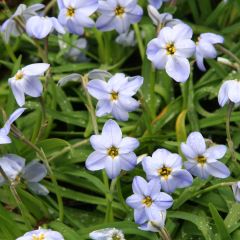
Ipheion uniflorum Rolf Fiedler
- Height at maturity 15 cm

Ipheion uniflorum Charlotte Bishop
- Flowering time March to June
- Height at maturity 15 cm
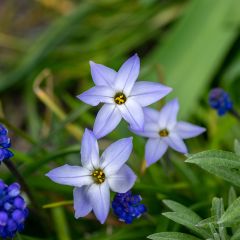
Ipheion uniflorum Wisley Blue
- Flowering time March to June
- Height at maturity 15 cm
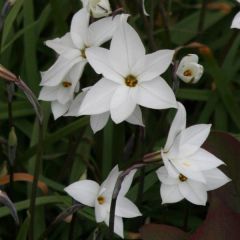
Ipheion uniflorum White Star
- Flowering time April to June
- Height at maturity 15 cm
Discover other Ipheion
Planting
When to plant Ipheion uniflorum?
Plant these small bulbs in autumn, ideally in September or October, both in open ground and in pots.
Where to plant these star-shaped flowering bulbs?
Undemanding regarding soil type and exposure, Ipheions quickly form flowering carpets. They can be tucked in anywhere, between existing plants, and will spread naturally. They create splendid mass effects in lawns, meadows, large flower beds, among perennials, at the front of shrubs, in rockeries, along walls, in full sun or the dappled shade of woodland. Plant them in ordinary, fairly fertile soil that is moist but well-drained—they dislike waterlogged conditions. Some even tolerate dry summer soils. Moderately hardy (-10°C to -15°C), in regions with harsh winters, mulch the soil to protect them.
They also make beautiful flowering pot displays for windowsills or terraces. They thrive alongside many other easy-going early spring bulbs such as Crocuses, Daffodils, Muscari, Hyacinths, or early-flowering Tulips.
How to plant?
Plant generously—Ipheions should be planted in large numbers in well-drained soil to prevent bulb rot. For maximum decorative impact, plant in groups of at least 50 bulbs. They can remain in the ground and will reliably reflower each spring, year after year. Thanks to their early blooms and affordable price, these naturalising bulbs are perfect for creating colourful, floriferous carpets early in the season.
- Loosen the soil deeply
- Improve drainage if needed by mixing gravel into the soil or placing a layer beneath the bulbs
- Plant 8-10 cm deep, with the bulb tip facing upwards
- Space bulbs 5 cm apart
- Cover bulbs with twice their height in soil
- Water moderately if the soil is dry
- Protect from slugs and snails, which love young shoots
Growing Ipheions in pots
Choose a sunny spot on a terrace or balcony. You can also plant them in pots initially before transferring them to open ground.
- Place a layer of clay pebbles at the bottom of a terracotta pot for perfect drainage
- Fill with a mix of garden soil, compost, and pumice
- Plant densely (around ten bulbs per pot), ensuring bulbs don’t touch, and cover with twice their height in soil
- Water once or twice weekly during growth
- Stop watering entirely during dormancy
- Apply liquid fertiliser once a month
→ Learn more in our guide: Growing Ipheion in open ground or pots
Care and maintenance
Ipheions are easy-care plants that require little maintenance. No pruning is needed. In colder regions, provide a protective mulch in winter or opt for container planting. Water once or twice a week during the growing season, but stop watering completely during the summer dormancy period – only water during prolonged dry spells.
Avoid cutting back the foliage before it naturally yellows, as this helps the bulb’s regeneration phase, ensuring beautiful blooms the following year.
For potted plants, water once or twice weekly and apply liquid fertiliser monthly if needed. Protect them from slugs and snails which are fond of tender shoots. After 5 years, you can divide overcrowded clumps and replant the offsets from the original bulbs, thereby extending your planting area and encouraging more vigorous flowering.
Propagation
Germination of Ipheion seeds is slow and unpredictable; a plant grown from seed will take 3 years to flower. We recommend division instead, which is very simple to do.
Dividing clumps
After 4-5 years, you can divide the clumps. Carry this out from June until early autumn when the leaves turn yellow – this is the best time.
- Dig up the clump with a garden fork
- Gently separate the sections by hand
- Replant the divided clumps immediately
- Water lightly
Dividing bulbils
When the foliage yellows, you can divide the bulbils or offsets of Ipheion.
- Lift the clump with a garden fork
- Carefully separate the bulbils around the mother bulb by hand or with a small knife
- Replant them immediately in the ground or in pots
- Water lightly
Pairing
With their bright blooms, Ipheions light up the shaded areas of your garden in winter. They thrive in various settings and gently but steadily spread in naturalistic gardens requiring little maintenance or weekend gardens, forming flowering carpets, in light woodland beneath deciduous trees, scattered across lawns, edging pathways or sunny rockeries, or even in pots on patios or balconies. Versatile, they pair beautifully with numerous low-maintenance plants sharing their care requirements.
Planted en masse, these miniature bulbs create prolific carpets of blue, white, or even mauve blooms alongside other naturalising spring bulbs like Daffodils, Jonquils, Grape Hyacinths, Snowdrops, Botanical Tulips, Bluebells, Iris reticulata, and Dog’s Tooth Violets. For companion planting, consider Wood Anemones which flower slightly later. Hellebores and Cyclamen coum, blooming alongside Ipheions, make excellent partners, as do Lungworts and Spurges. Perennials like violets, dead-nettles, Lesser Periwinkle, or Lily of the Valley will gracefully conceal spring bulbs’ fading foliage post-bloom.
Ipheions create exquisite fresh spring scenes in delicate white and blue hues. All varieties adapt well to pot cultivation on windowsills or balconies, mingled with Pansies, miniature Daffodils, Crocuses, Forget-me-nots, or Primroses.
To go further
Discover our wide range of ipheions in our online nursery
Our advice sheet: 9 must-have blue flowering bulbs for your garden
Frequently asked questions
-
Is the yellowing foliage on my Ipheion normal?
Yes, after flowering beautifully all spring, the Ipheion enters a summer dormancy period. The leaves then begin to yellow. Even if you find this gives your flowerbeds a somewhat untidy appearance, only cut back the foliage once it has completely withered, to allow the bulb time to replenish its reserves.
-
I planted Ipheion bulbs in autumn and nothing grew in spring, why?
While Ipheions are not particularly fussy about soil type, they do require well-drained, light soil: they dislike excess moisture, especially in winter. They thrive in hot, dry summers and detest heavy, waterlogged soils. To prevent bulb rot, which can lead to premature death, ensure when planting to incorporate a free-draining mix by adding compost, peat and pumice to your soil.
- Subscribe!
- Contents
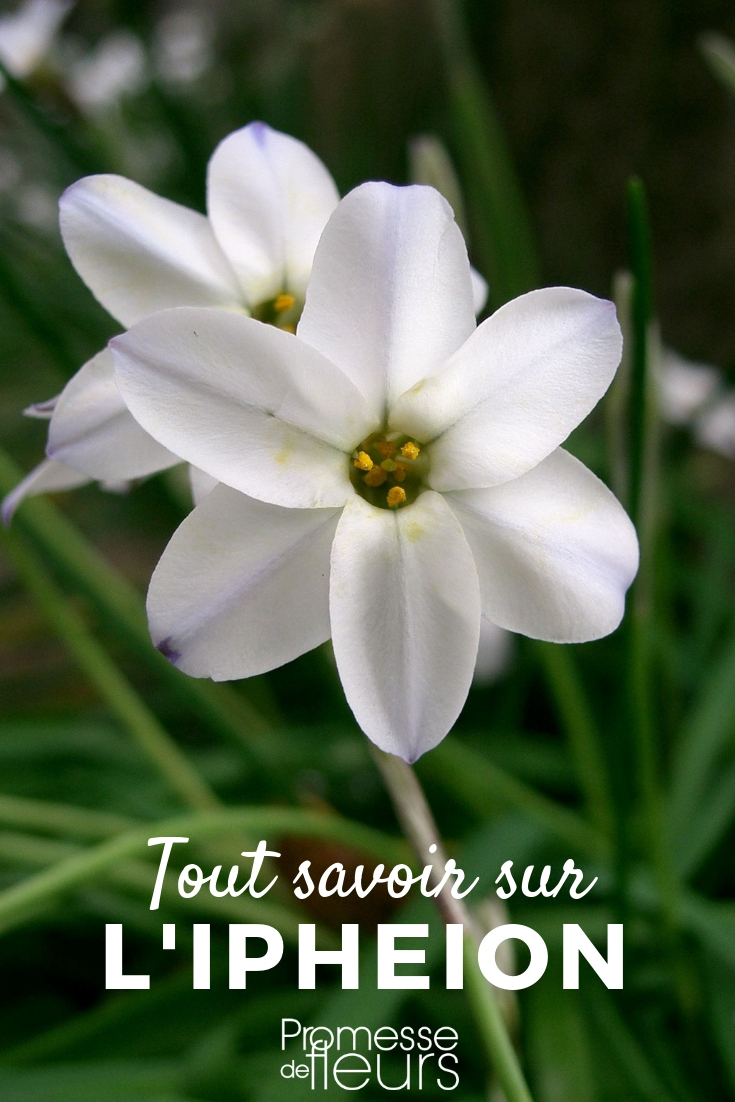


































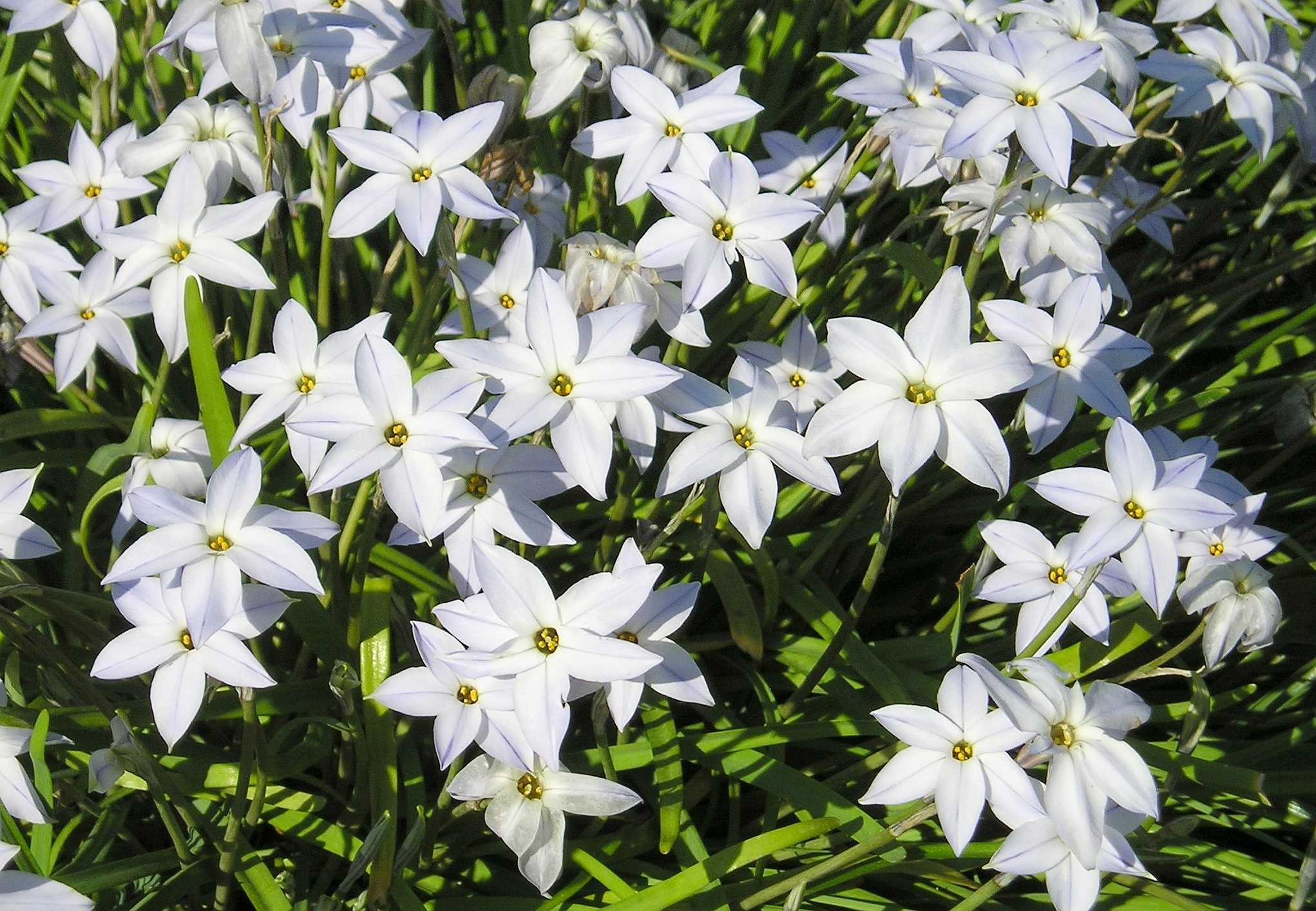
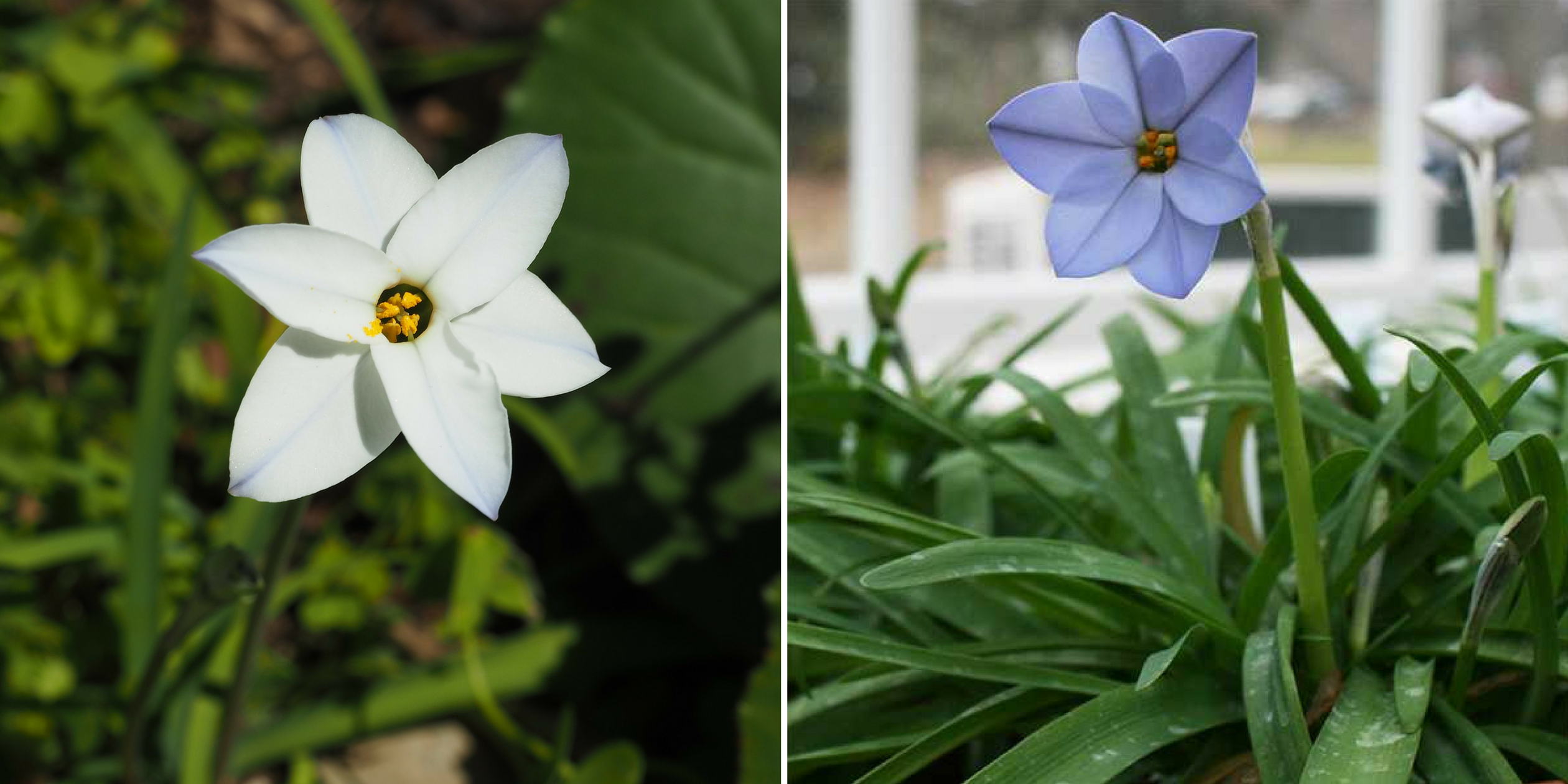

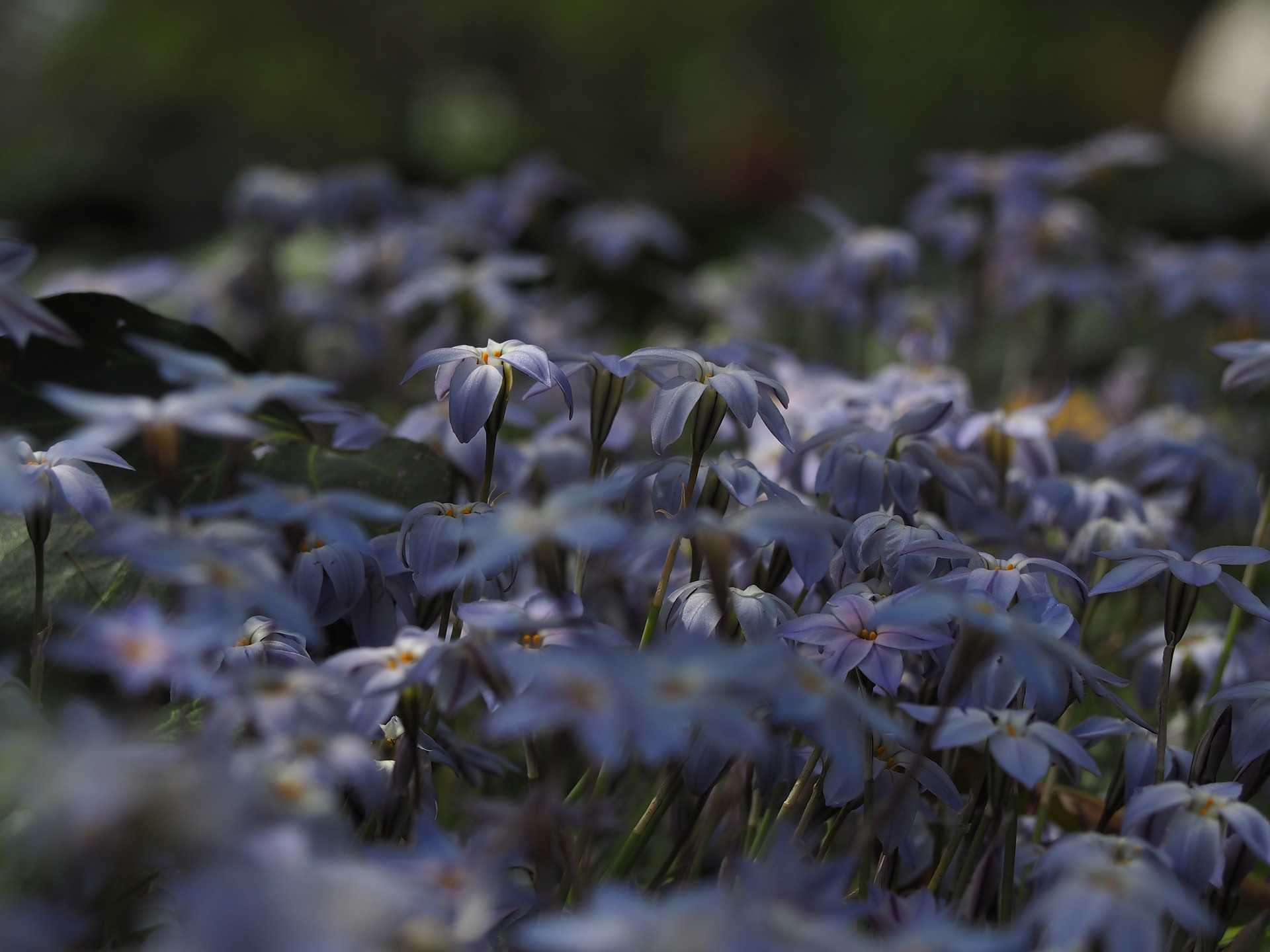
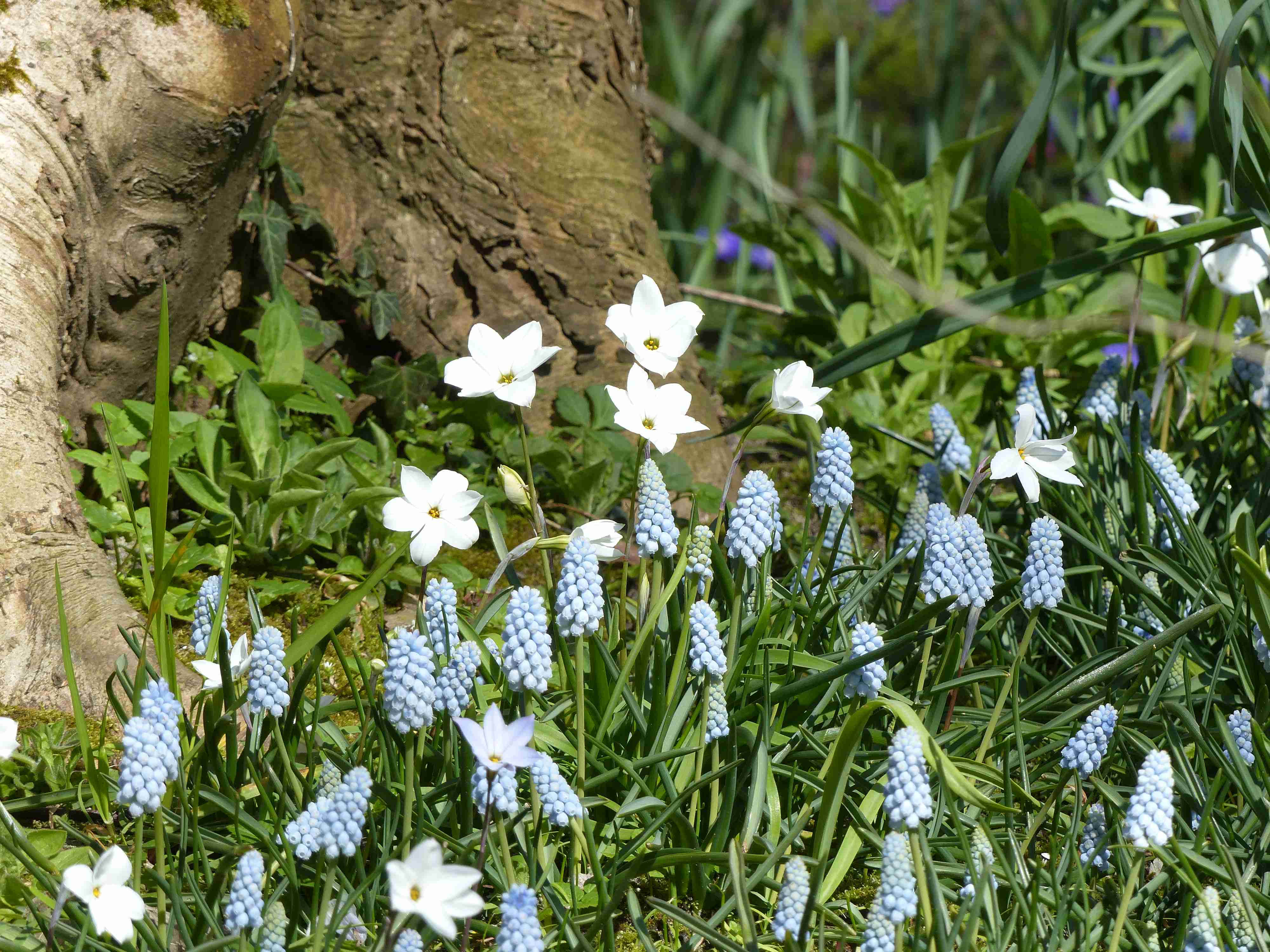
Comments